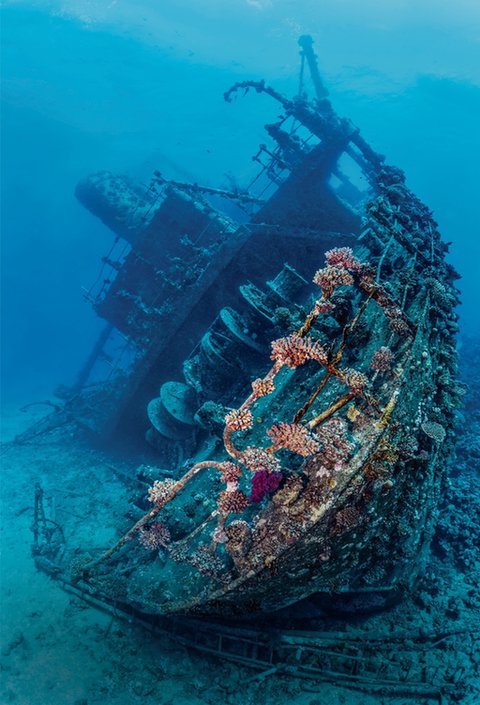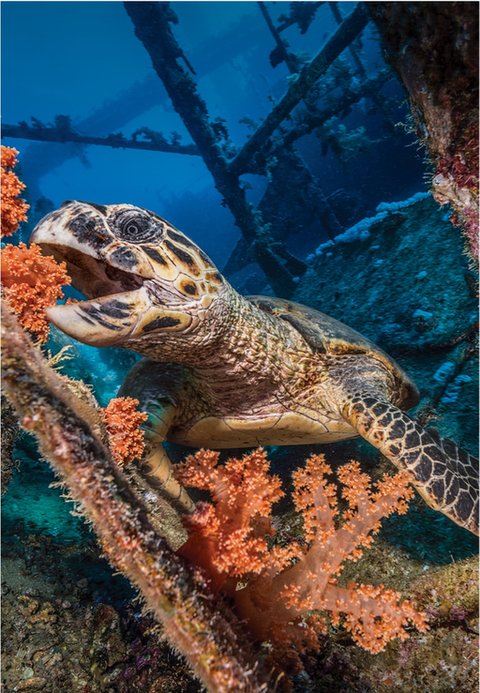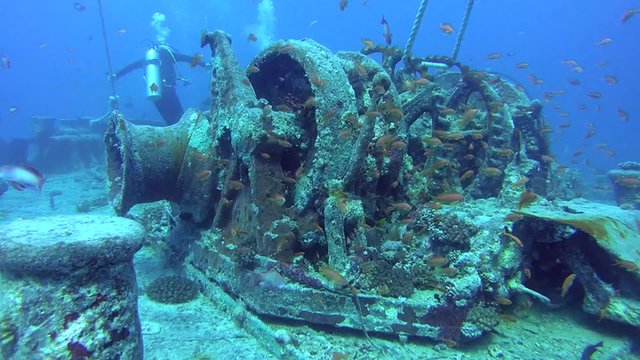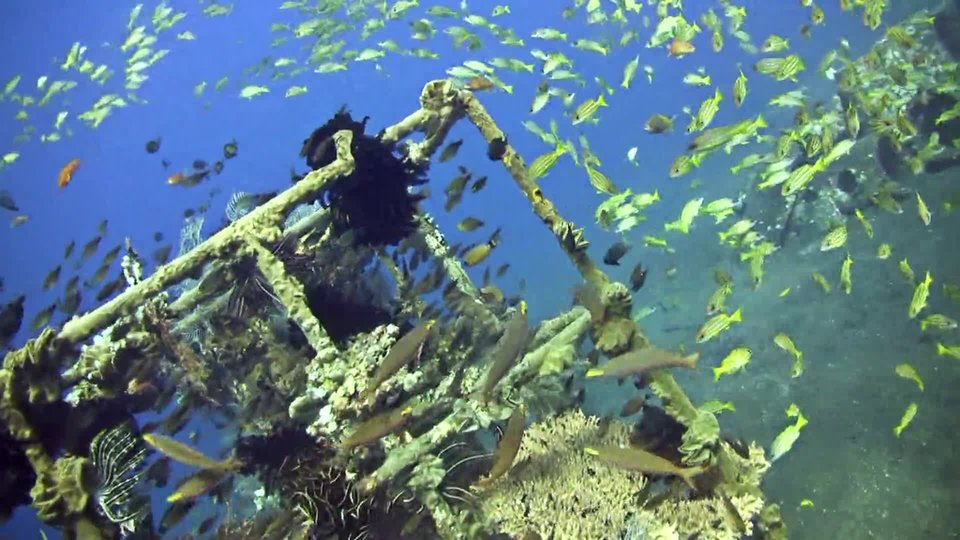AccidentalReefs
Someartificialreefsarenotplanned.Thesereefsarebornfromobjectsthatdon’tbelongintheoceanatall.Planesthatcrashorshipsthatsinksometimesbecomereefsby accident.
There’saplaceintheRedSeacalledSha’abAbuNuhas.ItisacoralreefoffthecoastofEgypt.Navigatingthisreefbyshipcanbedangerous.Infact,itisknownasaship graveyard.
Africa
Red Sea

ThewreckoftheGiannisDliesonitsside.It’snowencrustedwithcoralsand algae.
You’llfindfourlargeshipwrecksonthenorthsideofthisreef.Theseshipsallstruckthereef.Theysankandsliddownasteepslope.Theybecamepartiallyburiedin sand.
TheGiannisDwassuchaship.Itwasalarge,Greektransportshiphaulingtimber.In1983,itaccidentallyranfullspeedintoSha’abAbuNuhas.Thecrewabandonedthesinkingship.Thenastormsentitspiecestothe bottom.
Todivetherenow,you’dseethebonesofashipcoveredincorals.Hawksbillturtles,glassfish,eels,andNapoleonfishdriftby.Theshipmightnotbelongthere,buttheseahasclaimeditforits own.
CreatingaHome
You’llfindtheS.S.ThistlegormatthebottomoftheRedSeaaswell.ItwasacargoshipoftheBritishmerchantnavy.ItsankduringWorldWar II.
Atthetime,theshipwasfilledwithsuppliesforsoldiersandweaponsofwar.Itheldbombs,anti‑tankmines,rifles,andmorethan100motorbikes.Allstilllieatthebottomofthe sea.
AscubadiverlooksatpartoftheS.S.Thistlegorm.

AFutureHope?
Howstrangetheseitemslooknow,encrustedwithcorals.Thewreckisalivewithfish.Thisshiphasbecometheir home.
Nothingcanreplaceanaturalcoralreef.Yet,artificialreefscanmakeupforsomeoftheloss.Intime,marinecommunitiescanthriveinthese reefs.
AhawksbillturtlefeedsoncoralsattachedtothewreckoftheGiannis D.
Thisartificialreefisfullof life.


